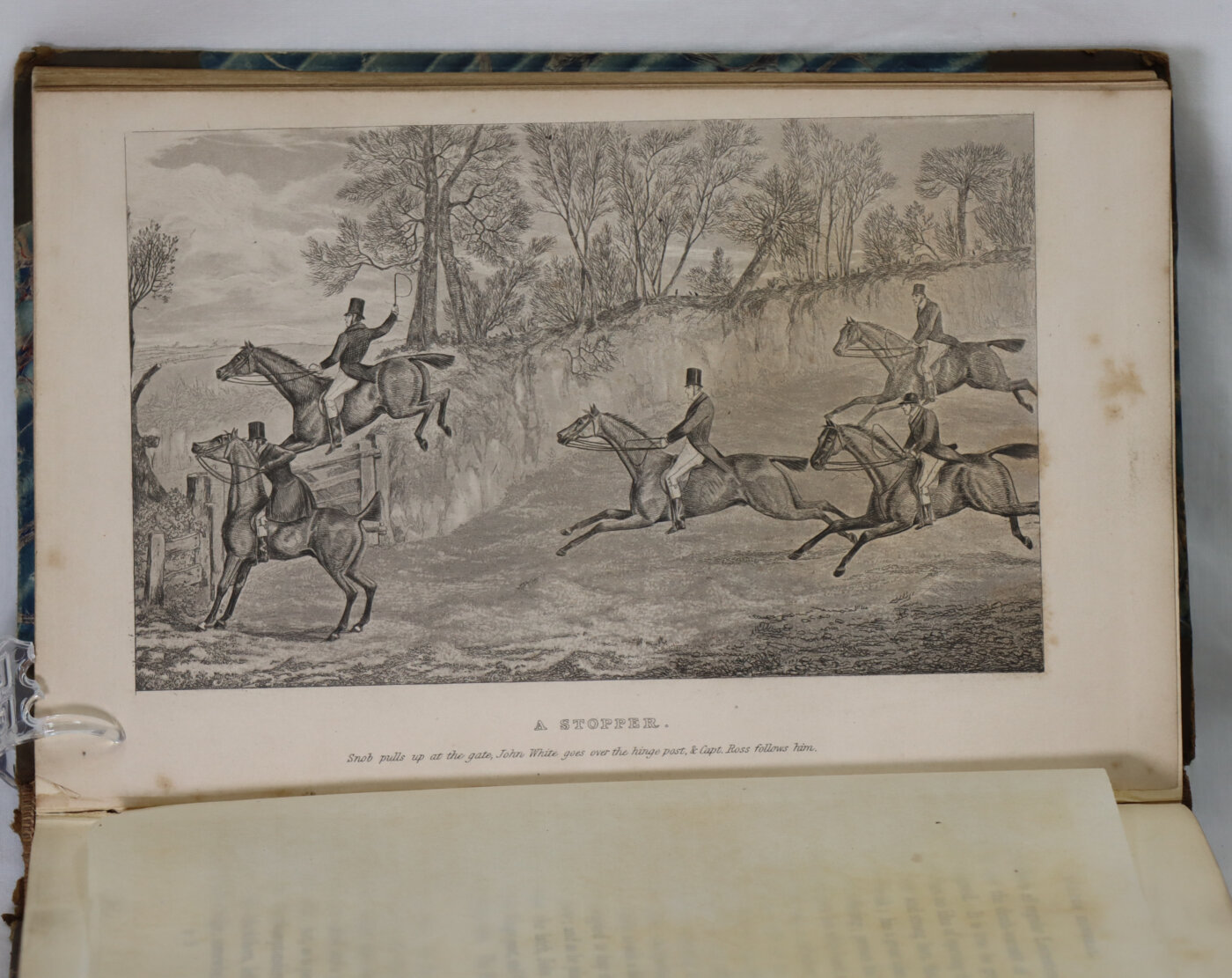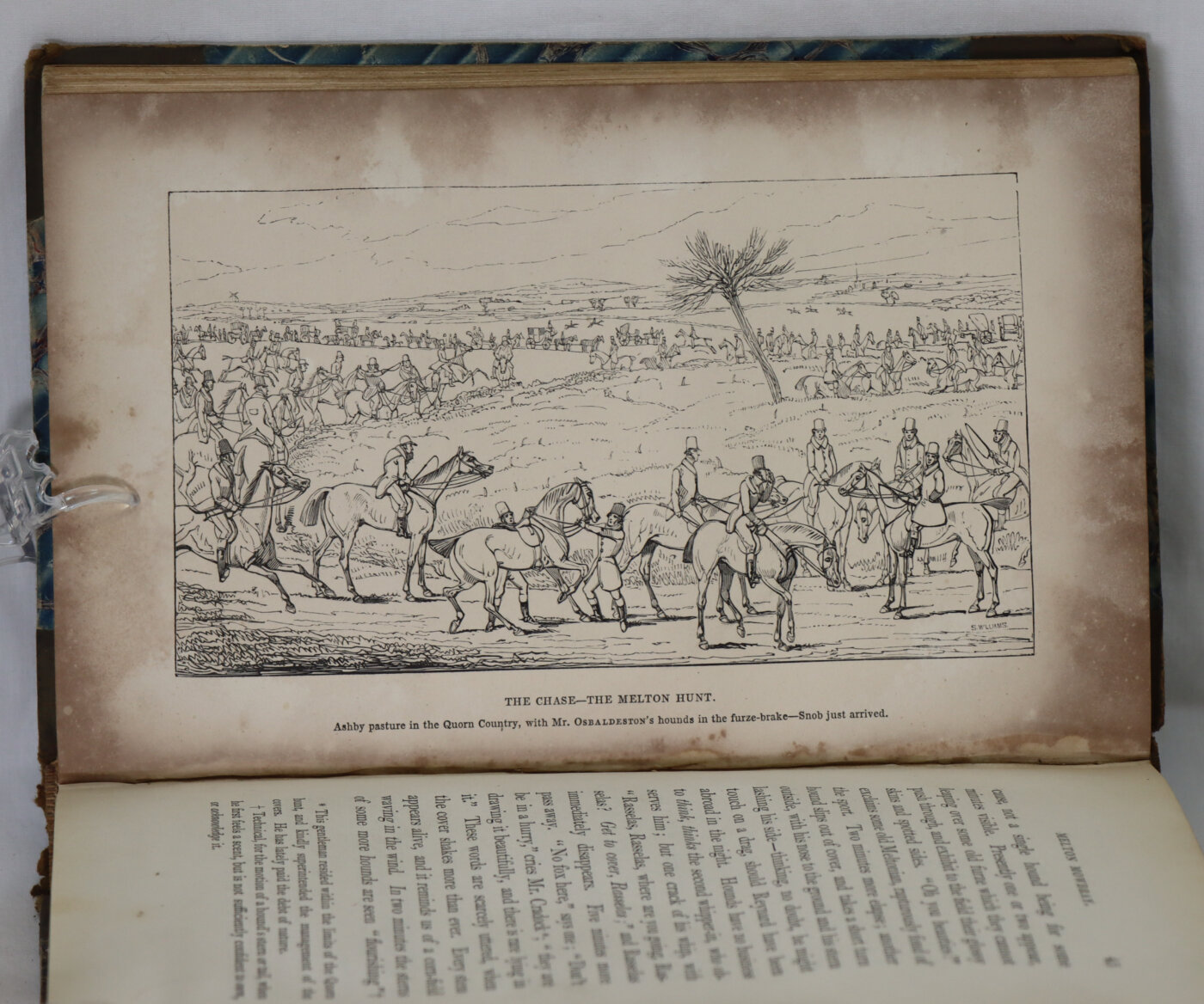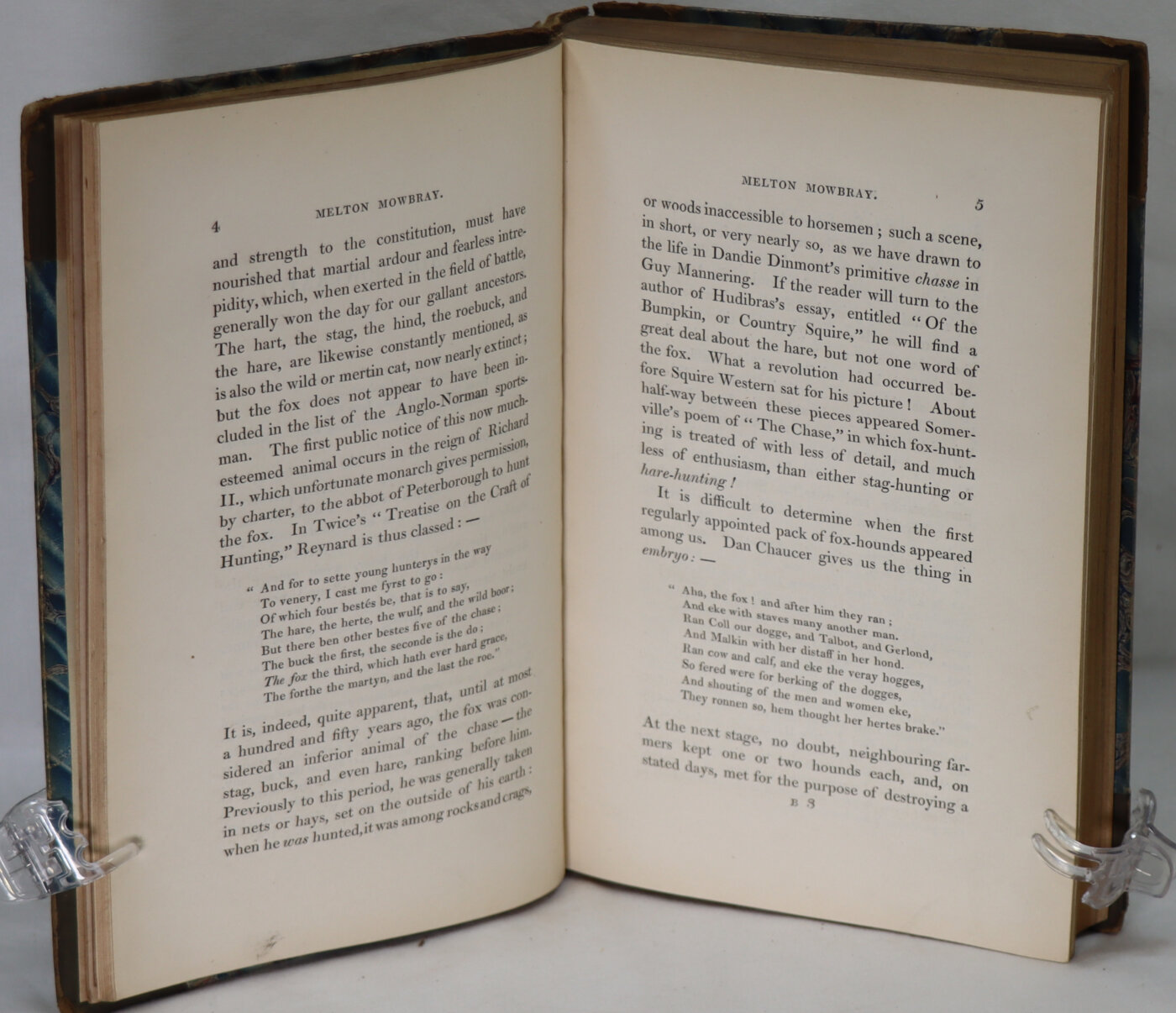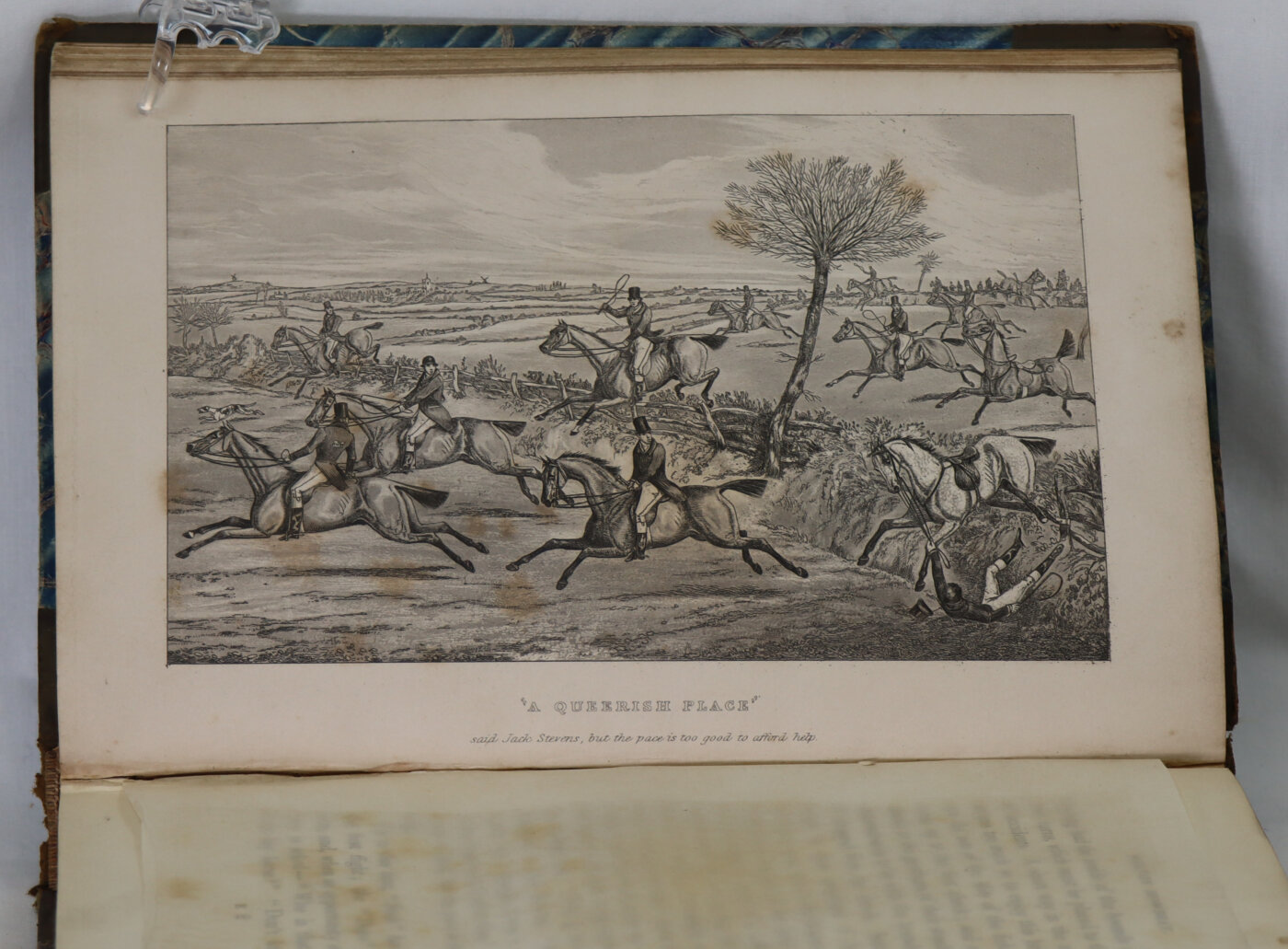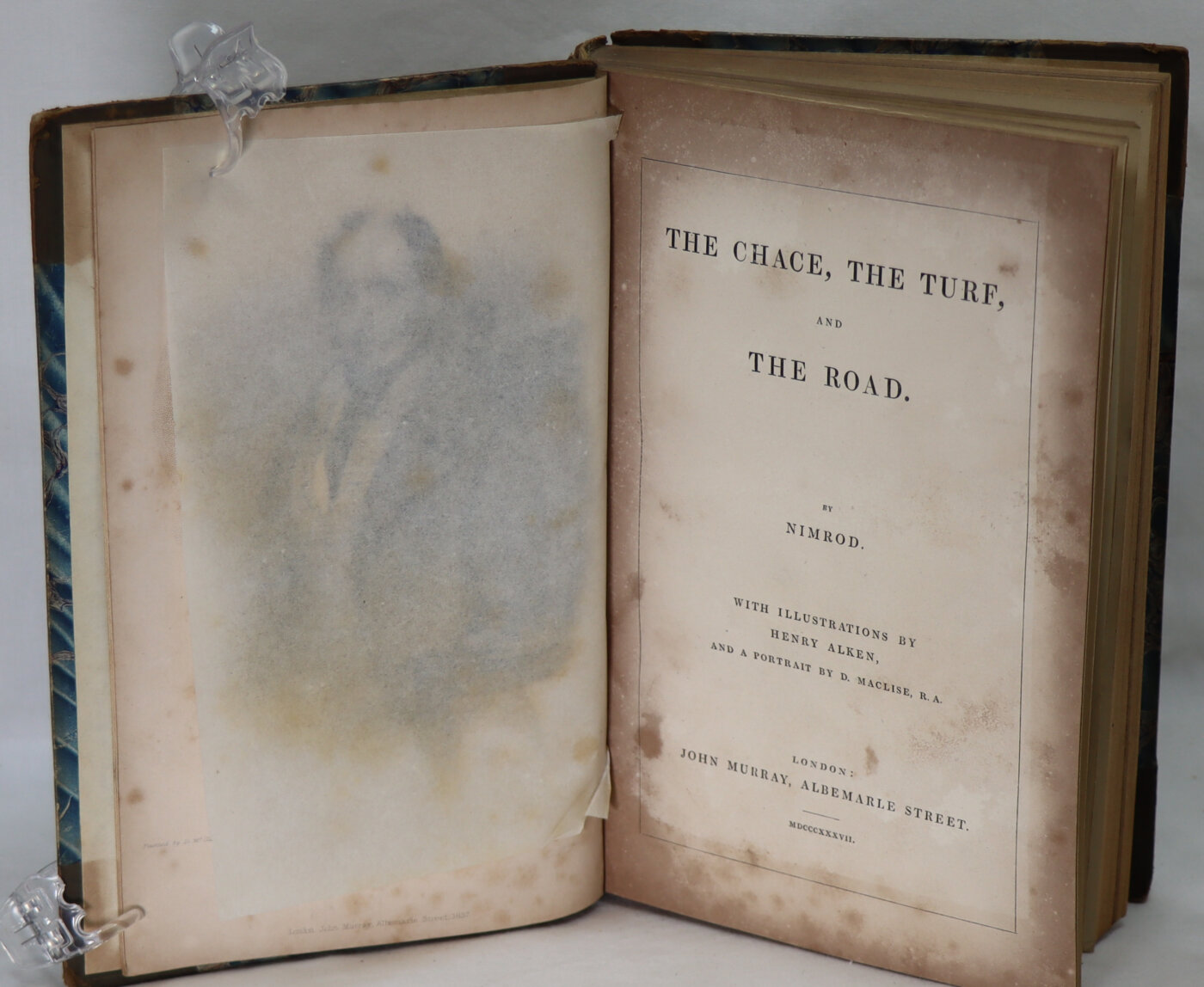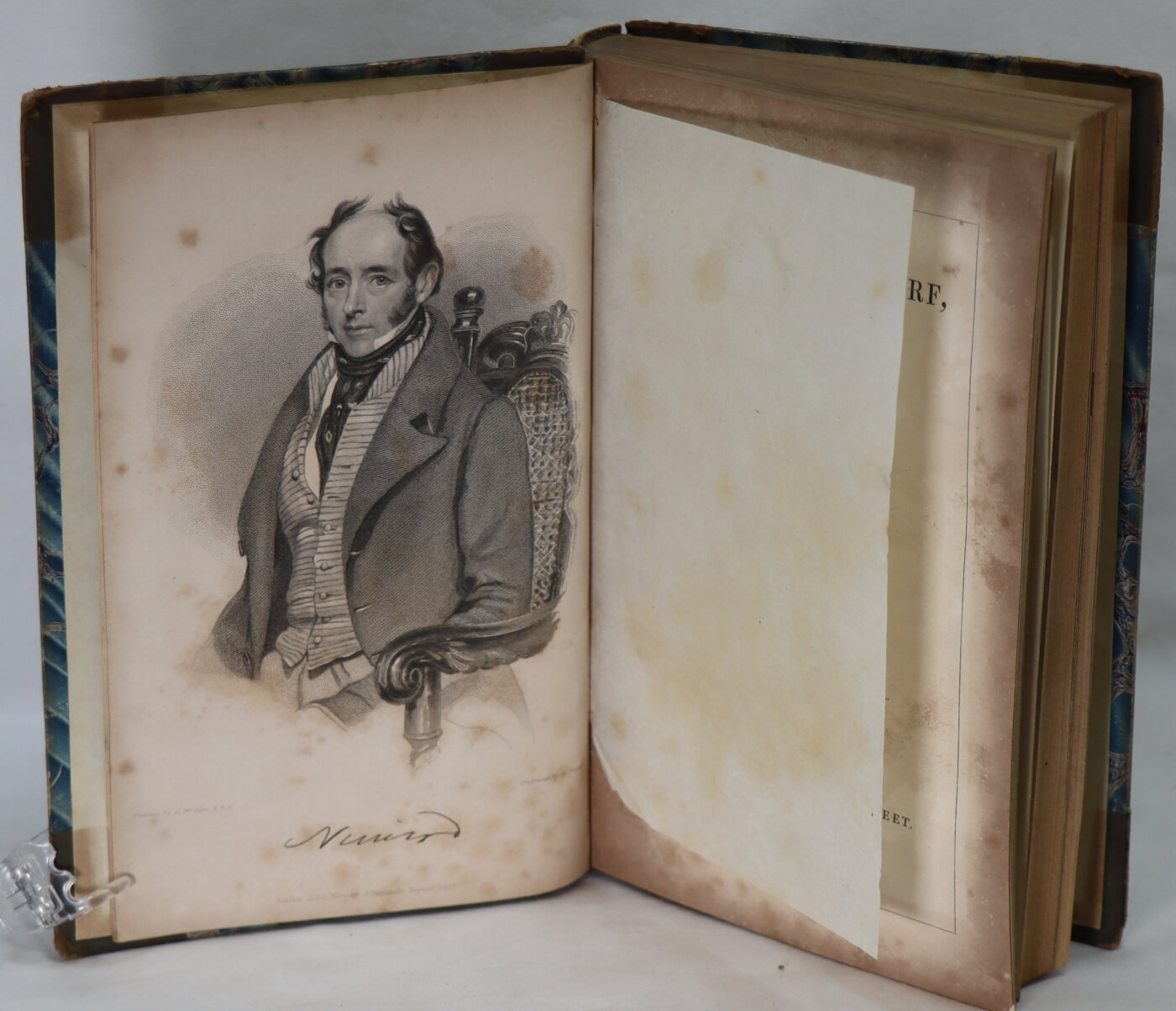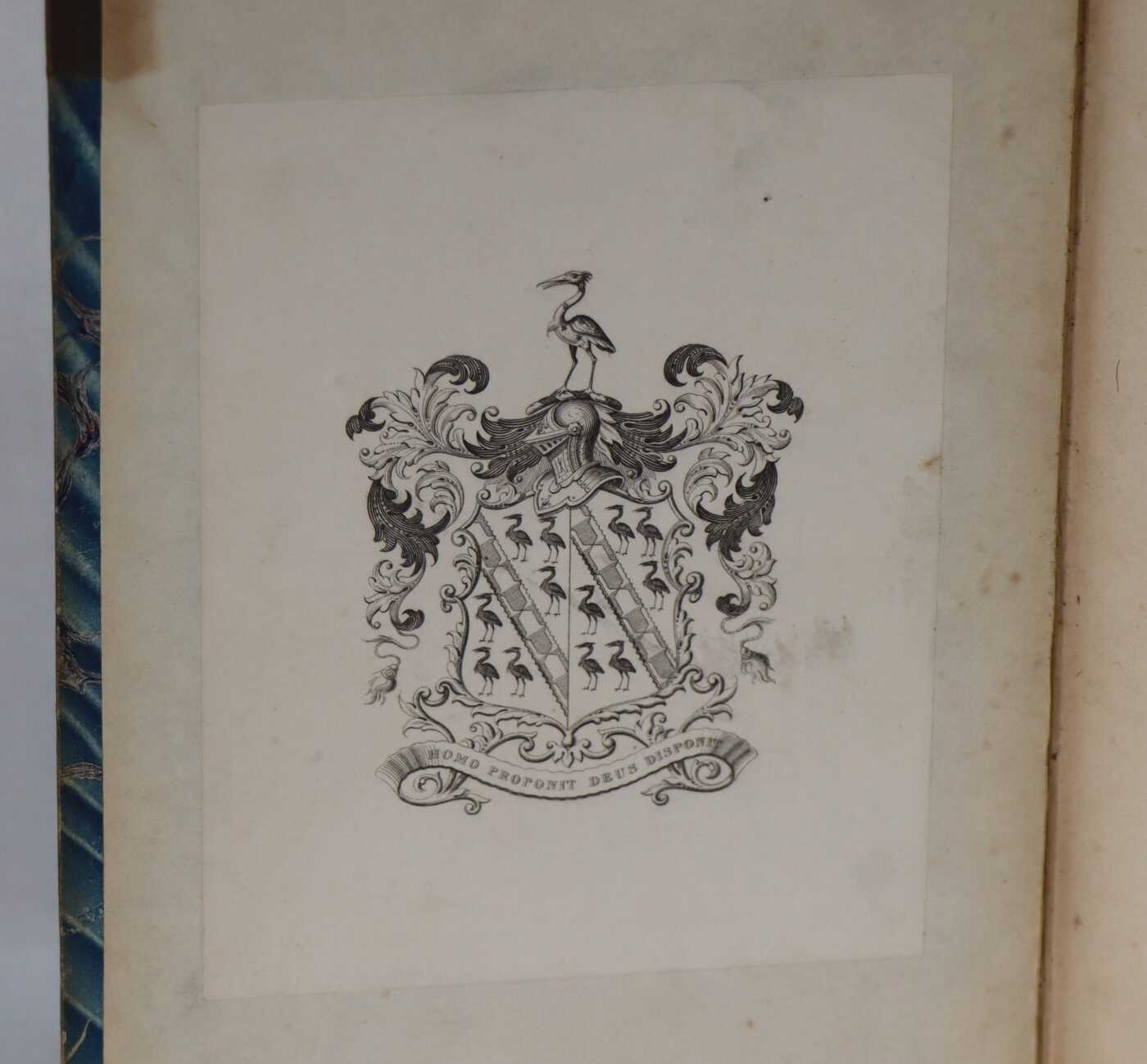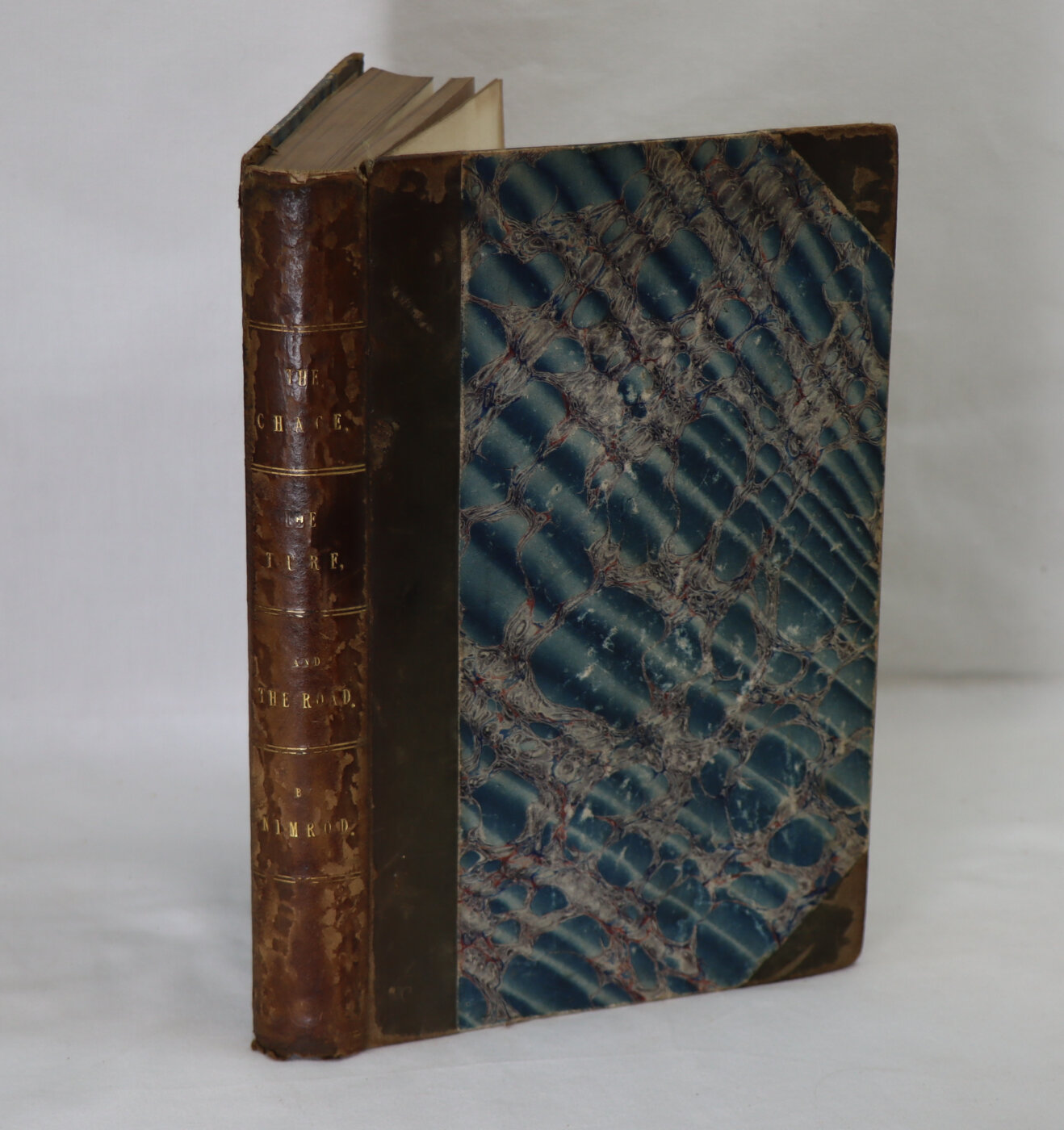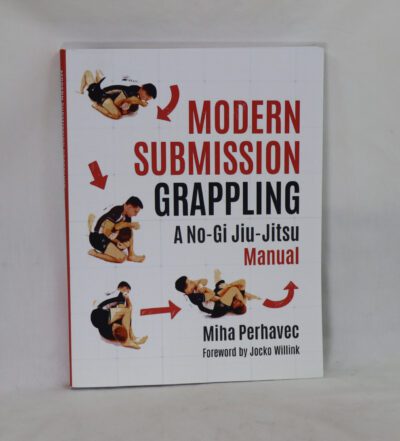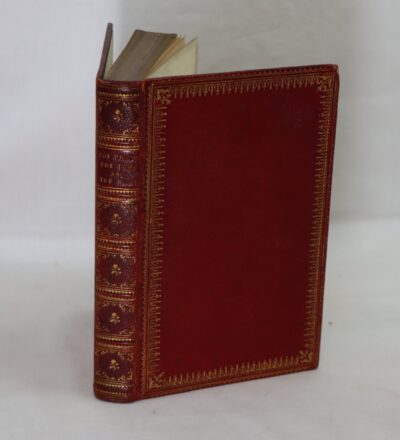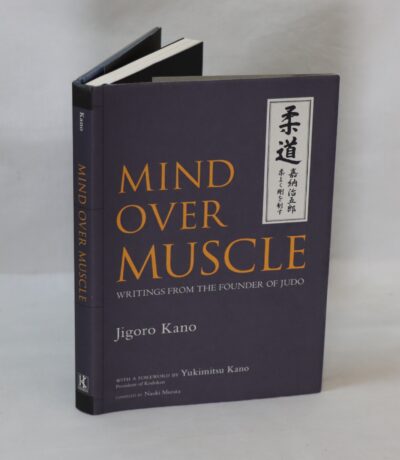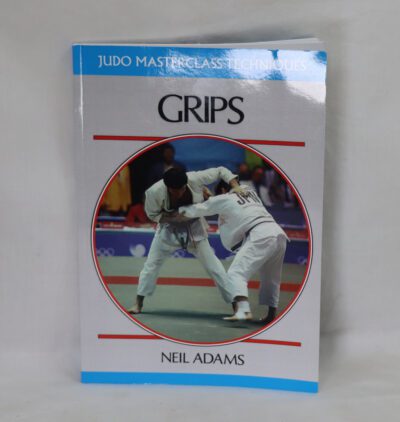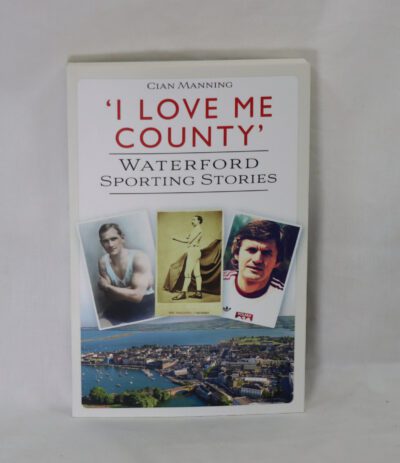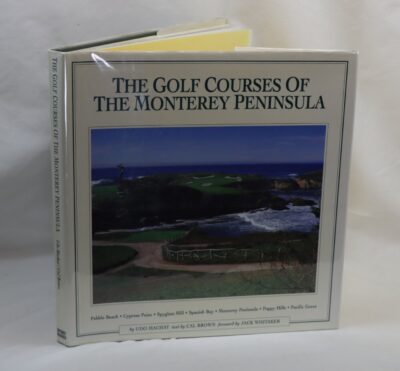The Chace, The Turf and The Road.
By Nimrod
Printed: 1837
Publisher: John Murray. London
| Dimensions | 15 × 22 × 3 cm |
|---|---|
| Language |
Language: English
Size (cminches): 15 x 22 x 3
Condition: Very good (See explanation of ratings)
Item information
Description
Brown calf spine with gilt banding and title. Blue marbled boards. illustrated by Henry Alken.
- We provide an in-depth photographic presentation of this item to stimulate your feeling and touch. More traditional book descriptions are immediately available
Note: This book carries a £5.00 discount to those that subscribe to the F.B.A. mailing list.
Hardcover. Condition: Good. FIRST EDITION. Nicely bound as illustrated in the photographs. The three parts cover fox hunting, coach driving and horse racing and originally appeared in the Quarterly Review of 1835 and in book form, 1837. Nimrod was the pseudonym of the Welsh fox hunter, later sporting writer, Charles James Apperley (1785-1843). Henry Thomas Alken (1785-1851) was a painter and engraver of sporting scenes, who often co-operated with Nimrod. The engravings within this volume are clean though much of the book’s interior requires delicate refurbishment to enhance its value.
Charles James Apperley (1777 – 19 May 1843), Welsh sportsman and sporting writer from an English family, and often resident in both countries, better known as Nimrod, the pseudonym under which he published his works on the chase and on the turf, was born at Plasgronow, near Wrexham, in Denbighshire, Wales in 1777.
Charles James Apperley was the second son of Thomas Apperley, of Wootton House, Gloucestershire, but is stated to have been born near Wrexham during 1778. Apperley was educated at Rugby School before joining the Ancient British Light Dragoons in 1798. He served with the regiment in Ireland during the rebellion that year, and in 1801 married Winifred Wynn of Peniarth, daughter of a Caernarvonshire landowner. He settled in Warwickshire, where he devoted himself to the pleasures of the Chase.
Between the years 1805 and 1820 Apperley devoted himself to fox-hunting. From 1813 to 1819 he was the agent for his brother-in-law’s estates and lived at Tŷ Gwyn, Llanbeblig. Around 1821, under the pseudonym of “Nimrod”, Apperley began to contribute a series of articles to The Sporting Magazine that covered horse races, hunt meets and other sporting events. His references to the personalities of the people he knew or met at such events helped to double the circulation of the magazine within a few years. Mr. Pittman, the proprietor of The Sporting Magazine, gave Nimrod a handsome salary and defrayed all the expenses of his tours. He also gave Nimrod a stud of hunters. After Pittman’s death, the proprietors of the magazine sued Apperley for the money that had been advanced. To avoid imprisonment, Apperley moved to Calais in 1830, where he supported himself by writing. Apperley is best known for the two books, The Life of a Sportsman, and Memoirs of the Life of John Mytton, both of which were illustrated with coloured engravings by Henry Thomas Alken.
Apperley eventually returned to England and died in Upper Belgrave Place, London, on 19 May 1843.
Henry Thomas Alken (12 October 1785 – 7 April 1851) was an English painter and engraver chiefly known as a caricaturist and illustrator of sporting subjects and coaching scenes. His most prolific period of painting and drawing occurred between 1816 and 1831.
Alken was born on 12 October 1785 in Soho, Westminster, and baptised on 6 November at St James’s Church, Piccadilly. He was the third son of Samuel Alken, a sporting artist. Two of his brothers were George and Samuel Alken the Younger, also an artist. In 1789, the Alken family moved from Soho to 2, Francis Street East, Bedford Square.
Young Henry first studied under his father and then with the miniature painter John Thomas Barber Beaumont (1774–1841), also known as J. T. Barber. In 1801, Alken sent a miniature portrait of Miss Gubbins to the Royal Academy Exhibition. He exhibited a second miniature at the Royal Academy before abandoning miniature painting and taking on painting and illustrating. Early in his career, he painted sporting subjects under the name of “Ben Tally-O”. Alken married Maria Gordon on 14 October 1809 at St Clement’s Church, Ipswich. On 22 August of the following year later the couple’s first son was baptised. Alken went on to father five children, of whom two were artists, Samuel Henry, also a sporting artist, known as Henry Alken junior, and Sefferien junior.
From about 1816 onwards Alken “produced an unending stream of paintings, drawings and engravings of every type of field and other sporting activity,” and his soft-ground etchings were often colored by hand. When Alken was 26, he and his young family lived over a shop in Haymarket that belonged to print publisher Thomas McLean of the “Repository of Wit and Humour.” McLean paid Alken a daily wage of thirty shillings, considered a good income at the time. Alken died in April 1851 and was buried on the western side of Highgate cemetery. Although fairly affluent for most of his career, he fell on hard times towards the end of his life and was buried at his daughter’s expense.
Alken worked in both oil and watercolor and was a skilled etcher. His earliest productions were published anonymously under the signature of “Ben Tallyho”, but in 1816 he issued The Beauties & Defects in the Figure of the Horse comparatively delineated under his own name. From this date until about 1831, he produced many sets of etchings of sporting subjects mostly coloured and sometimes humorous in character, the principal of which were: Humorous Specimens of Riding 1821, Symptoms of being amazed 1822, Symptoms of being amused 1822, Flowers from Nature 1823, A Touch at the Fine Arts 1824, and Ideas 1830. Besides these he published a series of books: Illustrations for Landscape Scenery and Scraps from the Sketch Book of Henry Alken in 1823, New Sketchbook in 1824, Sporting Scrap Book and Shakespeare’s Seven Ages in 1827, Sporting Sketches and in 1831 Illustrations to Popular Songs and Illustrations of Don Quixote, the latter engraved by John Christian Zeitter.
Alken provided the plates depicting hunting, coaching, racing and steeplechasing for The National Sports of Great Britain (London, 1821). Alken, known as an avid sportsman, is best remembered for his hunting prints, many of which he engraved himself until the late 1830s. (Charles Lane British Racing Prints pp. 75–76). He created prints for the leading sporting printsellers such as S. and J. Fuller, Thomas McLean, and Rudolph Ackermann, and often collaborated with his friend the sporting journalist Charles James Apperley (1779–1843), also known as Nimrod. Nimrod’s Life of a Sportsman, with 32 etchings by Alken, was published by Ackermann in 1842. In many of his etchings, Alken explored the comic side of riding and satirized the foibles of aristocrats. A collection of his illustrations can be seen in the print department of the British Museum.
Condition notes
Want to know more about this item?
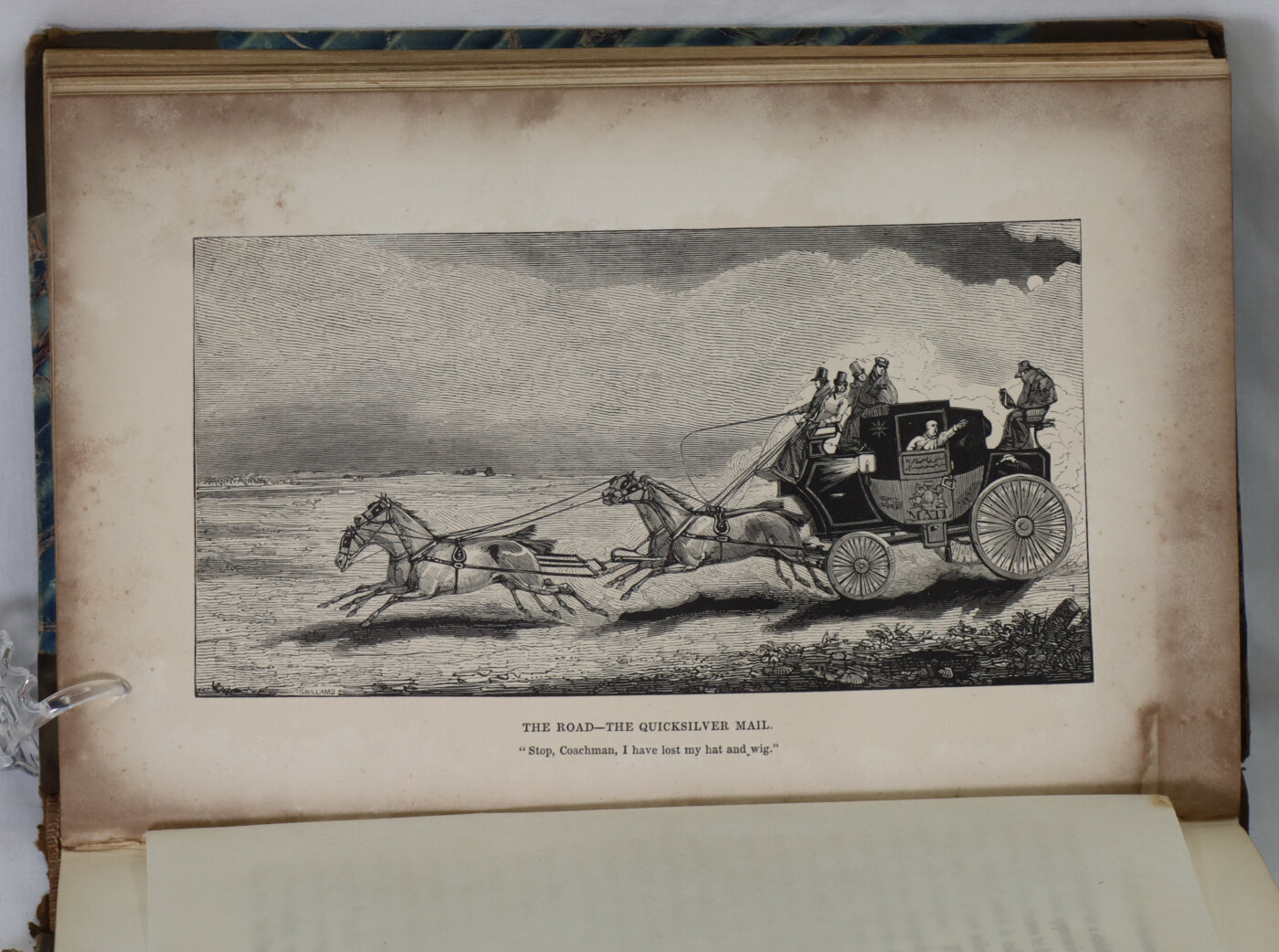
Related products
Share this Page with a friend

